Pinnixa faba (Dana, 1851)Common name(s): Pea crab, Mantle pea crab, Large pea crab |
|
| Synonyms: Pinnothera faba, Pinnotheres faba |  |
| Phylum Arthropoda
Subphylum Crustacea Class Malacostraca Subclass Eumalacostraca Superorder Eucarida Order Decapoda Suborder Pleocyemata Infraorder Brachyura Section Brachyrhyncha Family Pinnotheridae |
|
| Pinnixa faba, likely a male, from the mantle cavity of Tresus capax. Scale in background = mm | |
| (Photo by: Dave Cowles, July 2005) | |
How to Distinguish from Similar Species: Pinnixia littoralis, another common species, has an acute outer margin to its eye orbits and both sexes have a gap between the propodus and dactyl of the claw.
Geographical Range: Prince of Wales Island, Alaska to Newport Beach, CA. This species is much more common than is P. littoralis in Puget Sound.
Depth Range: Middle and low Intertidal and subtidal to 30 m (depth range of Tresus capax)
Habitat: Primarily found within the fat gaper clam Tresus capax. Juveniles may be in other clam species.
Biology/Natural History: A number of crabs may be found inside a clam but usually only one pair is mature. The presence of the adults seems to hinder the maturation of the juveniles. The small male crabs move around but the larger females remain sheltered by a fringe of tissue, the visceral skirt, attached to the clam's visceral mass. They scrape plankton from the clam's feeding mucus from this fringe. They cause slight damage to the host. Alternate hosts include the clams Tresus nuttallii, Macoma nasuta, Mya arenaria, Saxidomus gigantea, Clinocardium nuttallii, Siliqua patula, and Protothaca staminea; the mantle folds of the sea hare Aplysia vaccaria (in California), the atrial cavity of the tunicate Styela gibbsii, and in the cloaca of the sea cucumbers Caudina arenata, C. arenicola, and Cucumaria piperata. In Puget Sound adults seem to only be found in Tresus capax. In Washington, some females with eggs can be found year-round, and most raise two broods per year. A female usually carries 7000-8000 eggs. Breeding is interrupted when the females molt, from late August to October. Larvae are planktonic for 47 days, then seek a clam host. These crabs have a terminal molt (after 14 postlarval instars for the male). Females are large enough to lay eggs when they reach a carapace width of 12.8 to 14 mm (15-16 instars) but continue to grow to 19.7 mm (23-24 instars).
While tlarge majority and abundant species of true (Brachyuran) crabs walk sideways, in a 2025 preprint, Taniguchi et al. found that at least some Pinnotherid crabs (genus Arcotheres) walk forward. They speculate that the sideways walking in so many true crab species is is because walking sideways allows for rapid escape locomotion options in two directions, providing a selective advantage. Adult Pinnotherids, on the other hand, such as this species, typically live as symbionts in other invertebrates and may not need a rapid escape response.
| Return to: | |||
| Main Page | Alphabetic Index | Systematic Index | Glossary |
References:
Dichotomous Keys:Coffin, 1952
Flora and Fairbanks, 1966
Hart, 1982
Kozloff 1987, 1996
Smith and Carlton, 1975
Zmarzly, Deborah L., 1992. Taxonomic review of pea crabs in the genus Pinnixa (Decapoda: Brachyura: Pinnotheridae) occurring on the California shelf, with descriptions of two species. J. Crustacean Biology 12:4 pp. 677-713
Wicksten, 2009
General References:
Jensen,
1995
Kozloff,
1993
Morris
et al., 1980
Niesen,
1997
O'Clair
and O'Clair, 1998
Ricketts
et al., 1985
Scientific Articles:
Taniguchi, Cunya, Tsubasa Inoue, Kano Kohara, Jung-Fu Huang, Atsushi
Hirai, Nobuaki Mizumoto, Fumio Takeshita, and Yuuki Kawabata, 2025.
Evolution of Sideways locomotion in crabs (Preprint). doi:
Web sites:
General Notes and Observations: Locations, abundances, unusual behaviors:
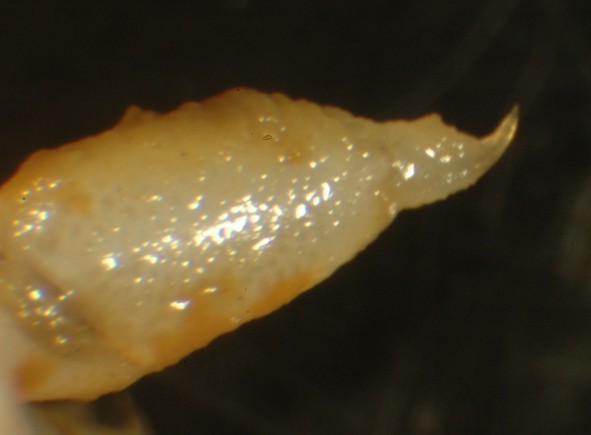
The dactyl
tips of the walking legs are curved.
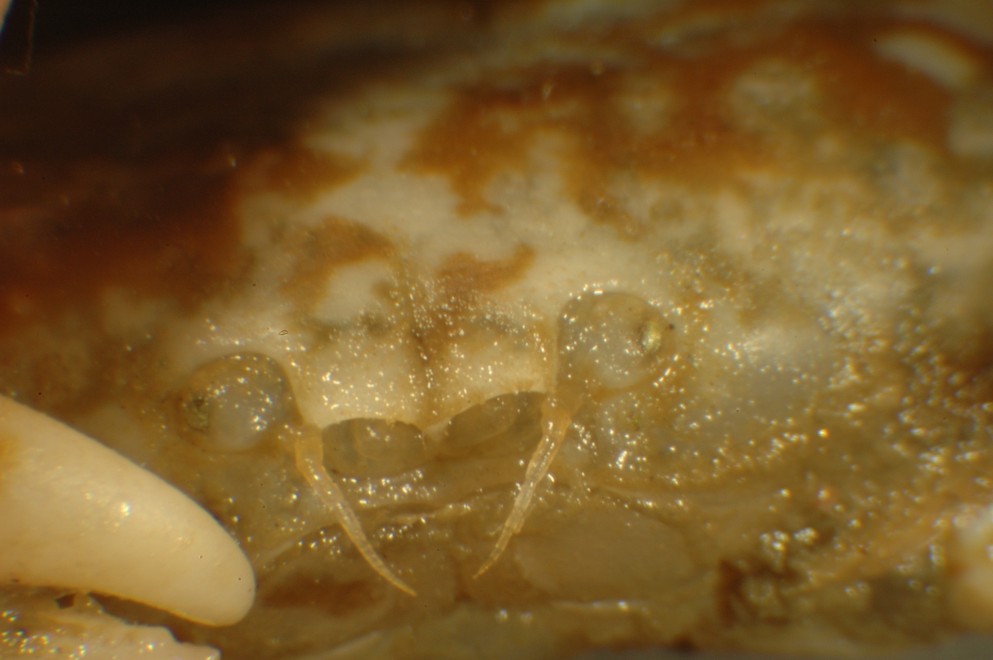
There is no rostrum
and no teeth between the eyes, and the outer margins of the eye sockets
are rounded.
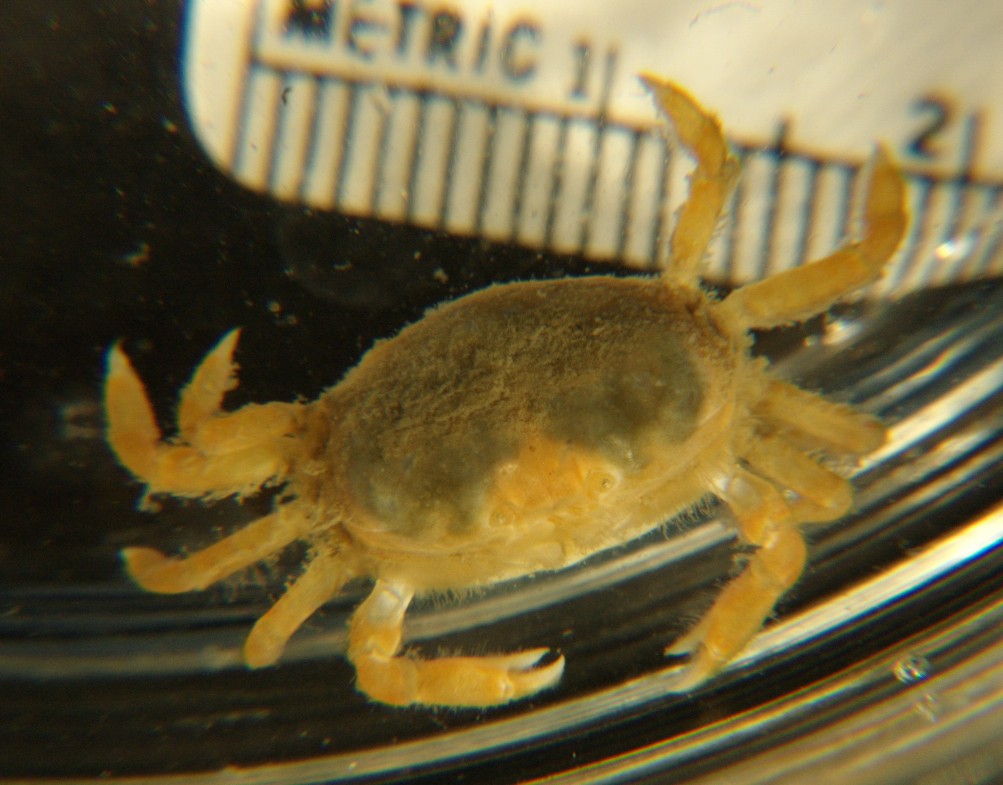
Here is another individual, with a bit more setae
than the one above. This one is likely a female (not the same
one
as below), from Tresus
capax. Photo by Dave Cowles, July 2008
| Below is a series of photos of a gravid female from Tresus capax. Click on any of them to enlarge them. | |
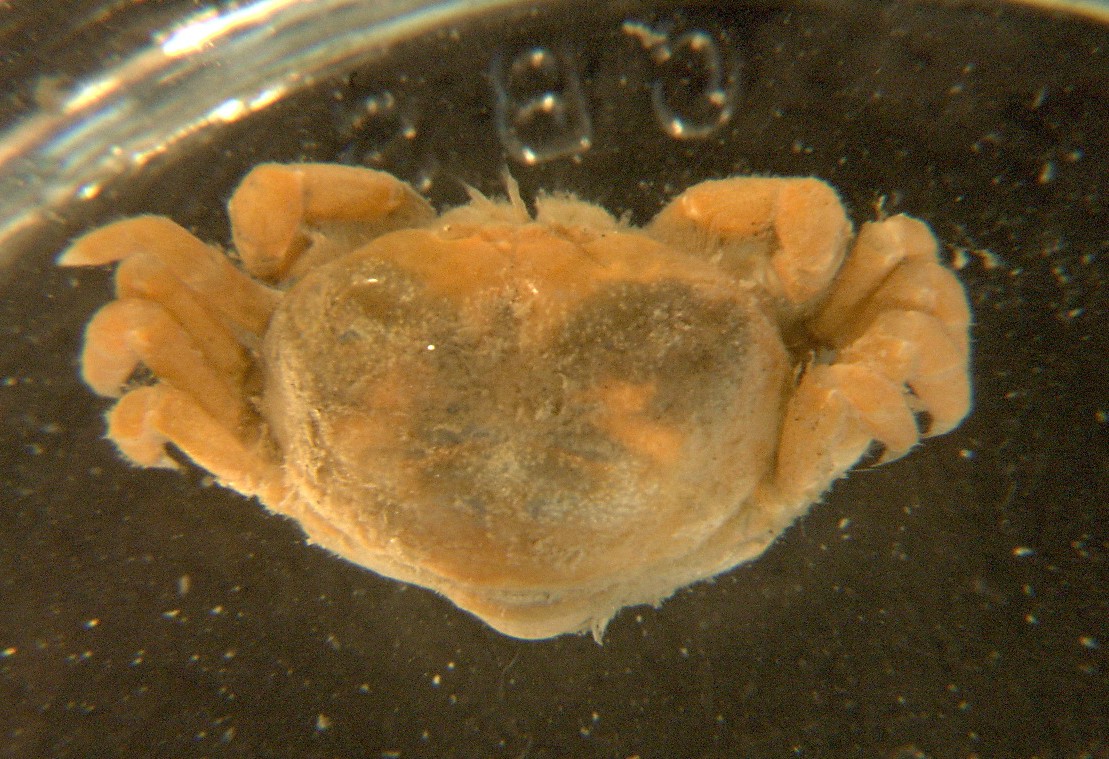 |
 |
| From the top, the gravid female looks similar to other individuals. Note, however, that the first segment of her abdomen can be seen bulging out at her posterior end (at the bottom in this picture). That is because she is carrying so many eggs that she cannot fold her abdomen anywhere near flat against her underside and must hold it partly extended. | This face-on photo shows the nature of her problem. Her abdomen is so full of eggs that she can hardly hold them. When she tries to walk around her abdomen bulges out so far below her that she has to stand on tiptoe in order to barely lift her abdomen off the ground. |
 |
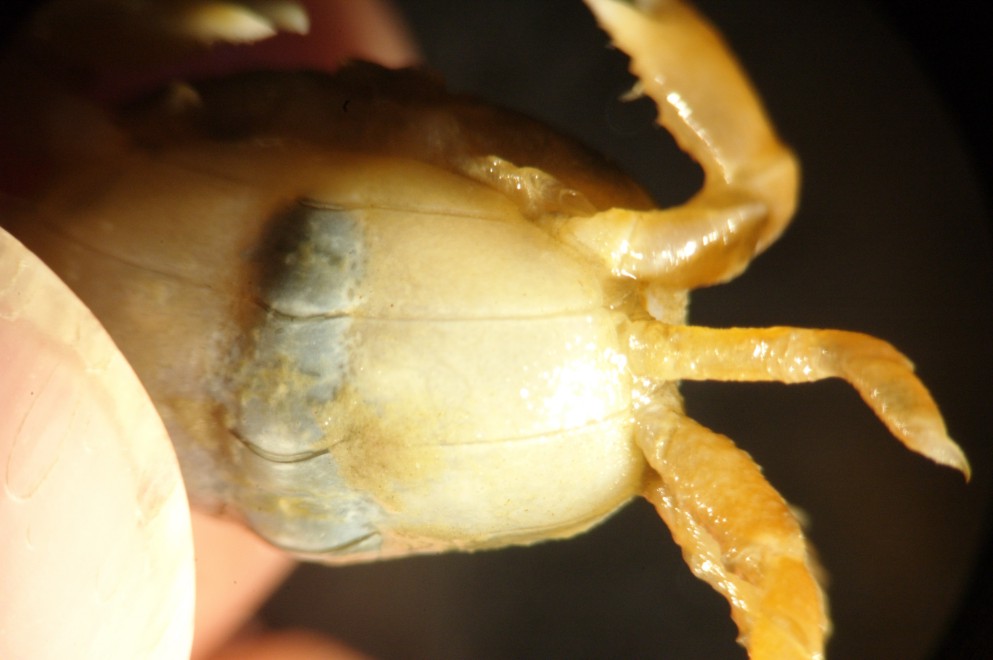 |
| This closeup shows the dark eggs bulging out between her abdomen and the underside of her thorax. Crabs, hermit crabs, and true shrimp carry their eggs on their abdomens like this, attached to their pleopods. Females have featherlike pleopods for attaching the eggs to, while male crabs have only the first few pleopods and use them for copulation. Notice also her claw--the propodus and dactyl sides of the claw are contoured to fit together without a gap, which is characteristic of P. faba. | A view from the underside shows the large, bulging abdominal plates. |
 |
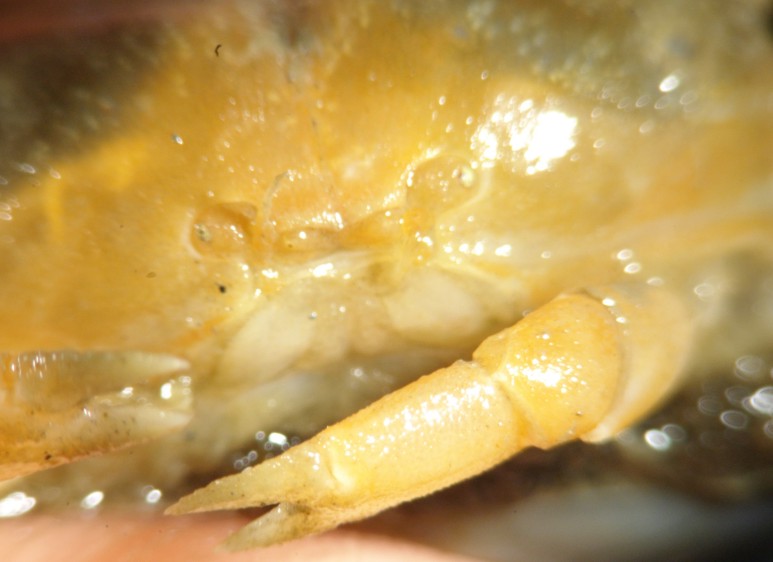 |
| This female has long, abundant setae on the legs. | Note the rounded orbits
(margin of the space around the eyes).
All photos by Dave Cowles, July 2008 |
Authors and Editors of Page:
Dave Cowles (2005): Created original page